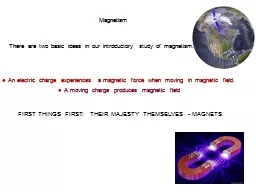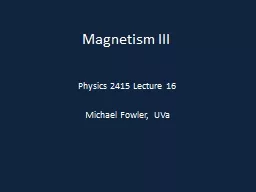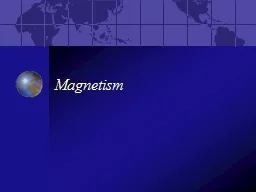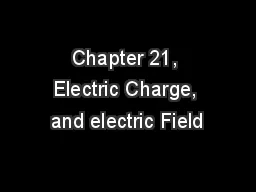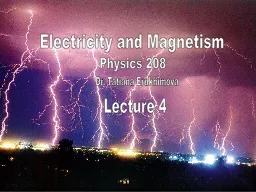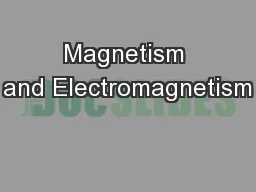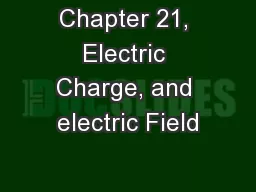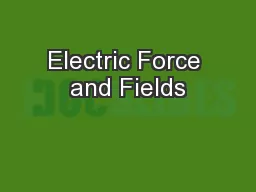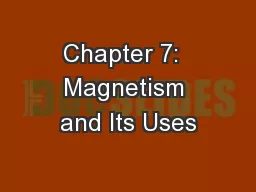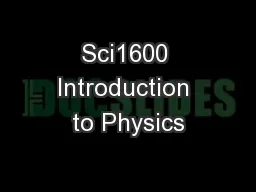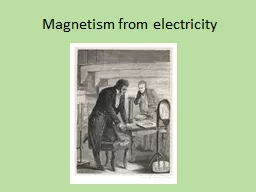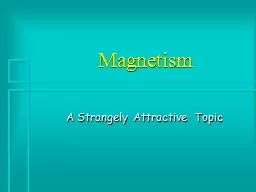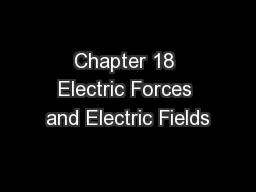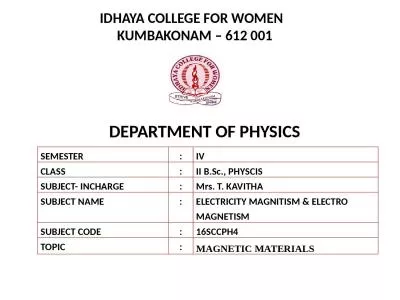PPT-Magnetism ● An electric charge experiences a magnetic force when moving in magnetic
Author : stefany-barnette | Published Date : 2019-06-25
A moving charge produces magnetic field There are two basic ideas in our introductory study of magnetism FIRST THINGS FIRST THEIR MAJESTY THEMSELVES MAGNETS The
Presentation Embed Code
Download Presentation
Download Presentation The PPT/PDF document "Magnetism ● An electric charge experi..." is the property of its rightful owner. Permission is granted to download and print the materials on this website for personal, non-commercial use only, and to display it on your personal computer provided you do not modify the materials and that you retain all copyright notices contained in the materials. By downloading content from our website, you accept the terms of this agreement.
Magnetism ● An electric charge experiences a magnetic force when moving in magnetic: Transcript
Download Rules Of Document
"Magnetism ● An electric charge experiences a magnetic force when moving in magnetic"The content belongs to its owner. You may download and print it for personal use, without modification, and keep all copyright notices. By downloading, you agree to these terms.
Related Documents

